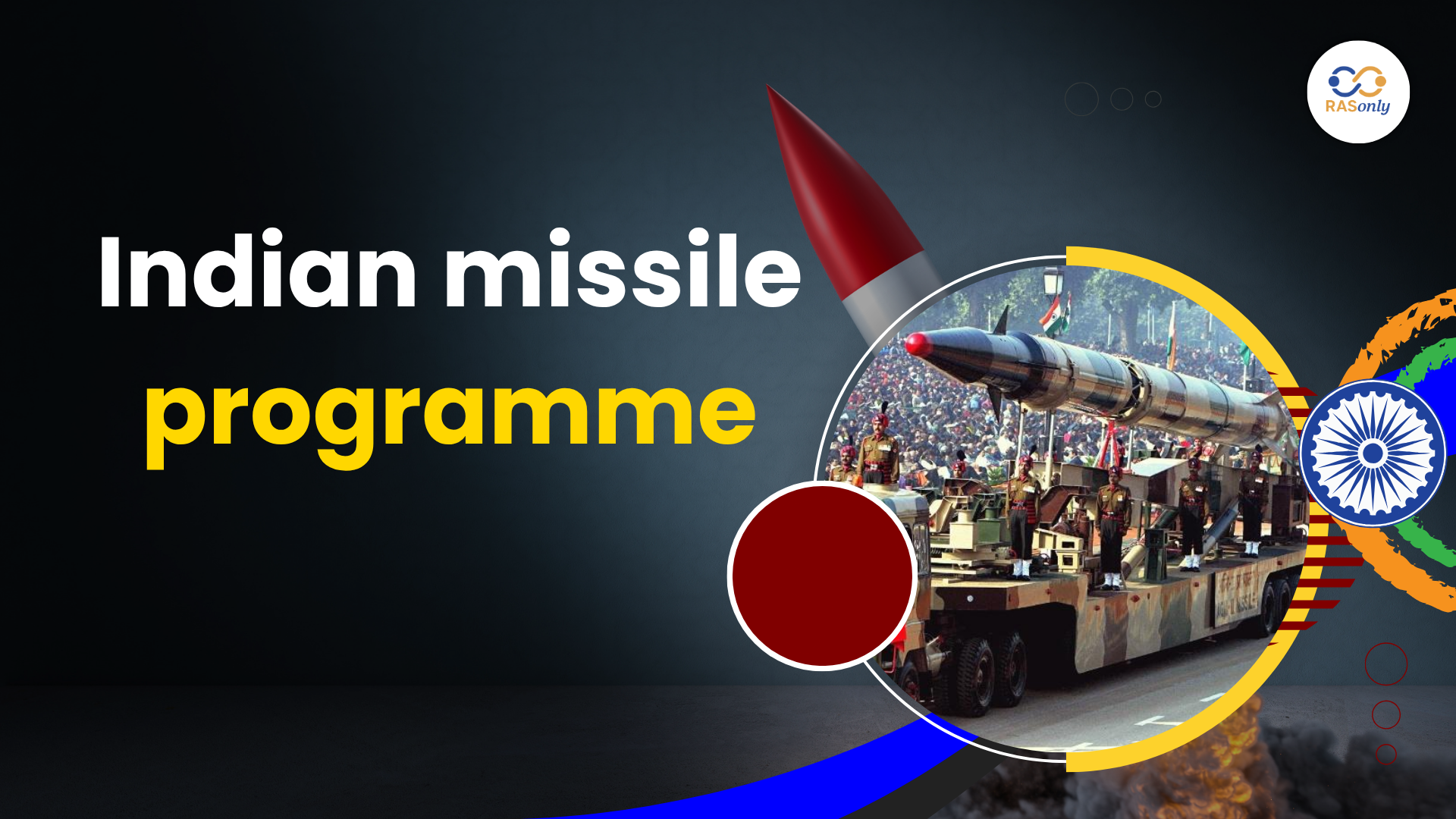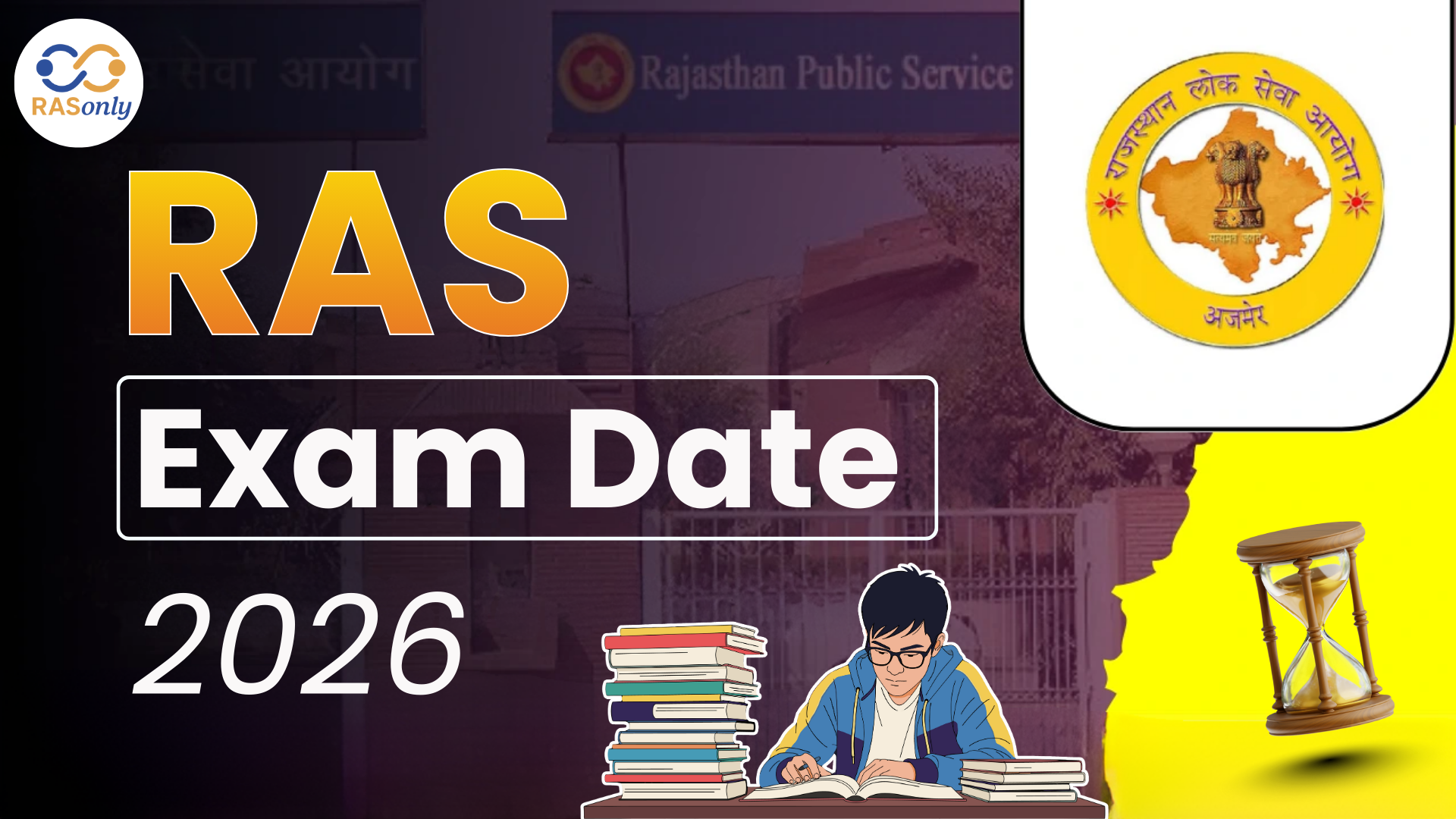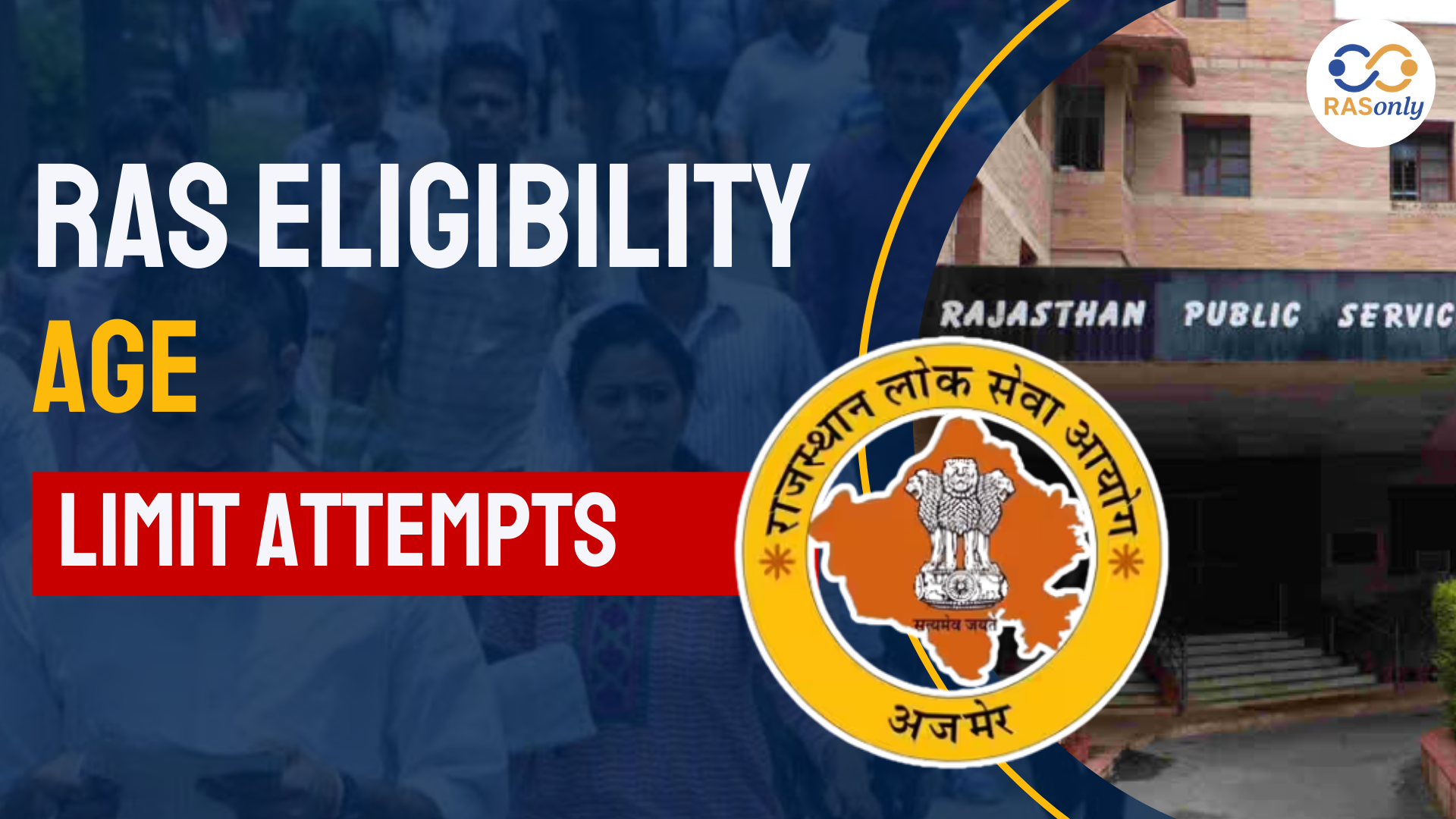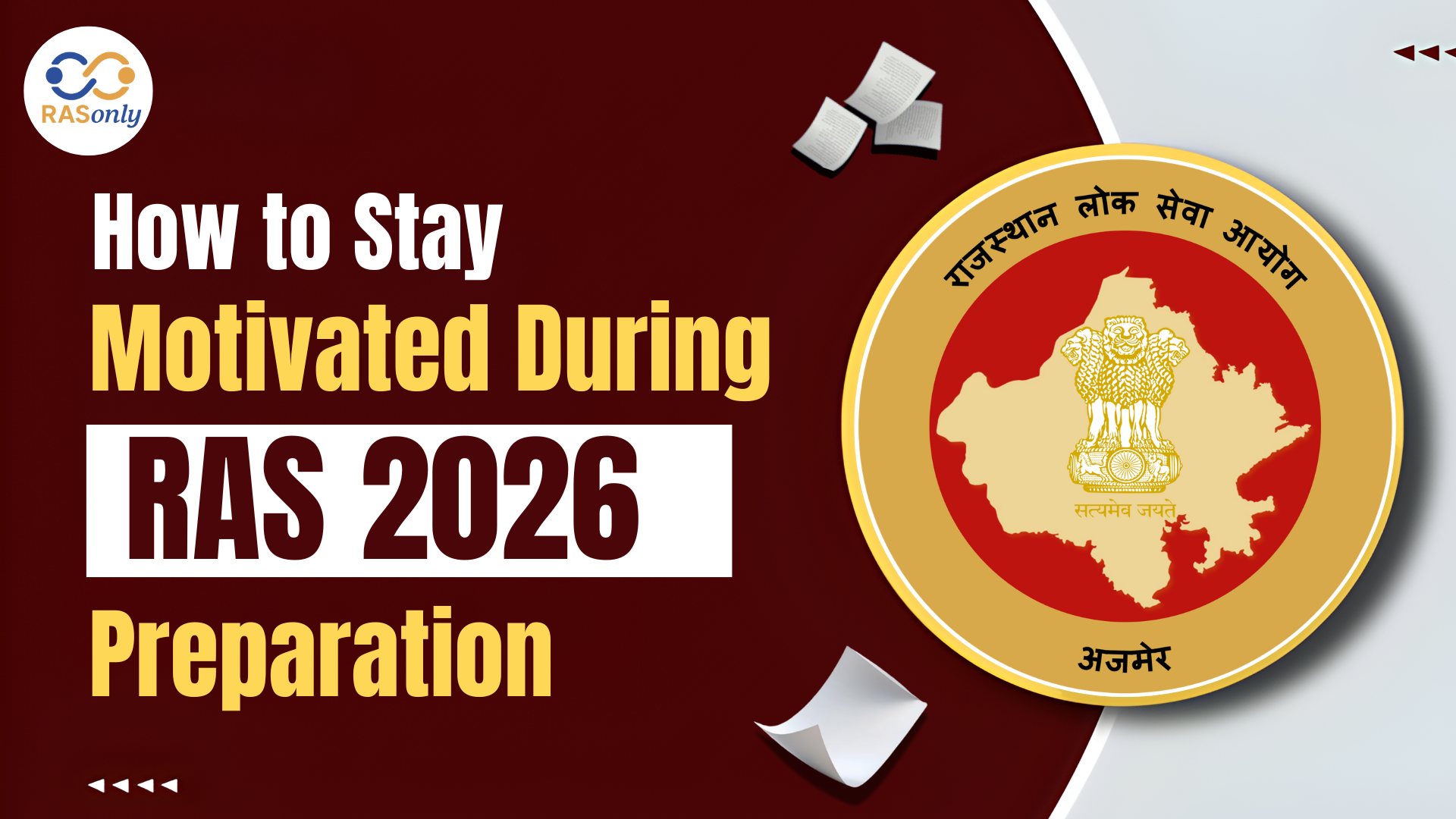RAS Exam Date 2026 for Notification, Prelims, Mains Date
- >
- RAS Preparation Resources
- >
- Missile Programs in India
Missile Programs in India


The DRDO-led missile programs installed in India are the foundation stones to the national defense approach as well as technological independence of the nation. Having started with Integrated Guided Missile Development Program (IGMDP), India has a wide array of missile systems consisting of ballistic, cruise and anti-ballistic missiles. Such improvements not only improved national security, but they also helped India to improve its global strategic position. Indigenous work in the development of missiles is compliant with the vision of Atmanirbhar Bharat. The advancement is an indication that India has developed its abilities in the field of defence and space.
Key Points for RAS Mains
India Missile Programs
- The Indigenous missile development was started in the Integrated Guided Missile Development Program (IGMDP) of the 1980s.
- Created by DRDO, with the help of the ISRO and Indian defense industries.
- Identification systems: Prithvi (short-range ballistic missile), and Agni (nuclear-capable ballistic missile).
- Subsequently added to the list was BrahMos (with Russia), Shaurya, and submarine launched ballistic missile (K Series).
- India is strategic deterrence-based and technological sovereignty-friendly.
Features of India Missile Programs
- Diverse Missiles Introduction: Short range tactical missiles, long range tactical missiles, intercontinental ballistic missiles (ICBM).
- Native Concentration: Low reliance overseas, using Indian Research and Development.
- Nuclear Capability: It improves second strike potential and strategic deterring.
- Various launch platforms: Land-based, Sea-Based, Air-made and submarine based launchers.
- Advanced Technologies: It includes stealth, high precision, AI guidance and hypersonic speeds.
- Future-Ready: The hypersonic missile, space-based defence and integration into AI programs are in the developmental phase.
Strategic Significance of India’s Missile Programs
|
Significance |
Details |
|
National Security |
Provides deterrence against regional threats and reinforces sovereignty |
|
Technological Advancement |
Drives innovation in guidance, propulsion, and materials |
|
Self-Reliance (Atmanirbhar Bharat) |
Reduces foreign dependency and builds local capability |
|
Regional Balance |
Ensures stability in a nuclear neighborhood |
|
Global Positioning |
Enhances India’s image as a responsible military and space power |
|
Economic Growth |
Boosts employment, local manufacturing, and tech industries |
Types of Indian Missiles
- Ballistic Missiles
- Agni Series : Agni-I (700 km) to Agni-V (5,000+ km), nuclear capable long range deterrent.
- Prithvi Series: Short range tactical ground to ground (150-350km).
- K Type: Submarine launched ballistic missiles (SLBMs) for second-stage capability.
- Cruise Missiles
- BrahMos: Supersonic (Mach 2.8–3,0), précisé, land/sea/air launch; India - Russia partnership.
- Nirbhay: Terrain hugging long range (~1,000km) subsonic missile which is currently under development.
- Anti-Ballistic Missiles (ABM)
- prithvi air defence (PAD): High altitude intercept.
- Advanced Air Defence (AAD) uses lower altitude interception and is part of a two-layer defence.
- The Surface-to-Air Missiles (SAM)
- Akash: Medium (30 km), home grown.
- Barak-8: It was developed in collaboration with Israel; it defends against airplanes and missiles.
- Anti-Tank Missiles
- Nag: 3 Gen,tt:,a6216 high performance fire-and-forget ATGM.
- HELINA / MPATGM: Helicopter launched-Man portable variants.
- Tactical Missiles
- Shaurya: Supersonic, superfast, low radar, nuclear powered.
- Prahaar: Speedy reaction, low range battlefield missile.
Way Forward: Enhancing Missile Capabilities
|
Area |
Recommendations |
|
R&D and Innovation |
Invest in AI, composite materials, and advanced guidance systems |
|
Hypersonic Technology |
Develop ultra-fast, maneuverable weapons to stay ahead of global threats |
|
ABM Strengthening |
Improve detection, interception, and layered missile defense systems |
|
SLBM Development |
Expand K-series to boost sea-based second-strike capabilities |
|
Cybersecurity & AI Integration |
Ensure systems are resilient to cyber threats and use AI for real-time decision making |
|
International Partnerships |
Deepen collaborations (e.g., Israel, Russia) to co-develop future missile systems |
|
Testing & Infrastructure |
Enhance facilities for rapid prototyping and deployment |
|
Non-Proliferation Alignment |
Stay within global norms while preserving strategic autonomy |
Conclusion for RPSC
The history of missile development in India demonstrates a wise combination of military need and aspiration combined with technological acumen. Negating the possibilities of a first strike, building a defense, achieving self-reliance and acquiring a global status, missile programs have enabled India in various ways. However, with the future of India being as promising as it can get, innovation, self-development, and planning will be instrumental in stability as one of the missile powers in the world
FAQs for RPSC RAS
Post Category
- RAS Salary
- Result
- RAS Admit Card
- RAS Job
- RAS Cutoff
- Preparation Tips
- RAS Answer Key
- RAS Exam Analysis
- RAS Syllabus
- RAS Previous Year Papers
- RPSC RAS Exam Pattern
- RAS Interview
- RAS Mains Exam Date
- RAS Vacancy
- RAS Test Series
- RAS Best Books
- RAS Preparation Resources
- RAS Coaching Centre
- History
- Polity
- Geography
- Economics
- Science
- Art and Culture
- RPSC RAS Application Form
- RPSC RAS Notification
RASonly Interview Guidance Program

Mr. Ashok Jain
Ex-Chief Secretary Govt of Rajasthan
- IAS officer of the 1981 batch, Rajasthan cadre.
- Passionate about mentoring the next generation of RAS officers with real-world insights.
- Got retired in Dec 2017 from the post of Chief Secretary of the state of Rajasthan.

Mr. Guru Charan Rai
Ex-ASP / SP in Jaisalmer
- Guru Charan Rai, IPS (Retd), retired as Inspector General of Police (Security), Rajasthan, Jaipur in 2017.
- Served as ASP and SP in Jaisalmer, Nagaur, Sri Ganganagar, Sawai Madhopur, Dausa, Sikar, and Karauli.
- He also held key positions as DIGP and IGP in the Law and Order division.

Mr. Rakesh Verma
Ex-IAS Officer, B.Tech, MBA, and M.A. (Economics)
- IAS officer of the 1981 batch and retired in Chief Secretary Rank.
- Civil servant of high repute and vast experience.
- Has been teaching UPSC CSE subjects for the last six years.
Related Post
👉🏻 Register Today to Join Classes! 👍🏻
- Team RASOnly -
🎯 Benefits of RASOnly Coaching:
- ✅ 1:1 Mentorship with RAS Officers
- ✅ Experienced and Expert Faculty
- ✅ Free Library Access
- ✅ Daily Minimum 4 Hours Must
- ✅ Comprehensive Study Material
- ✅ Regular Tests & Performance Analysis
- ✅ Personalized Guidance & Doubt Solving
- ✅ Online & Offline Class Options
- ✅ Affordable Fees with Quality Education
Key Highlights:
- 👉🏻 3-Day Refund Policy
- 👉🏻 New Batch Starting from 04 August
- 👉🏻 Registration Amount: Only ₹1000





